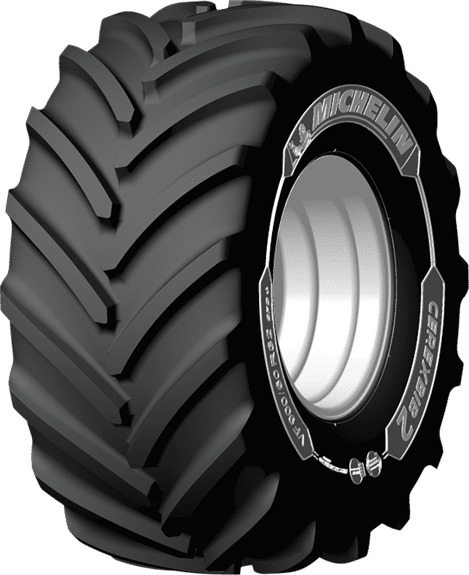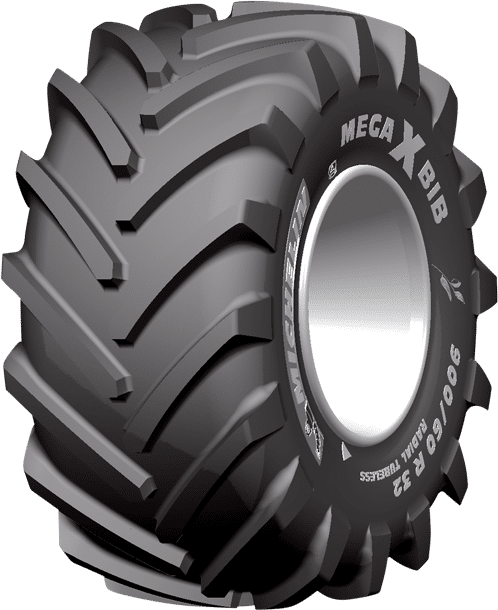
How do I choose the right ag tires for a combine harvester?
How do I choose the right ag tires for a combine harvester?
As you know, harvesting can't wait. When the time comes, you must be able to get your combine harvester in the field, no matter the weather conditions. Some ag tires are better suited to harvesting than others, giving you the performance you expect, even on wet ground. How do you choose the right agricultural tires for your combine harvester?
Let our experts guide you.
Harvesting conditions
Grain must be harvested at the right time, and doesn’t wait even if the weather is not ideal. Rainy periods make the ground softer and muddier, which makes work in the fields more complicated, especially if you're not equipped with adequate farm tires.
Your combine harvester has drive wheels in the front and steer wheels in the rear. It’s important to fit them with suitable tires to help them perform their role properly and effectively in the limited time you have to harvest.
If you choose your tires according to precise criteria, you'll be able to get good performance even in the most difficult conditions during the harvest period, thereby protecting your ground and optimizing your crop yield.
Choice criteria
1. The right dimensions
Before getting started, take note of the possible dimensions for your machine. The manufacturers stipulate very specific dimensions that must be met when you decide to fit new farm tires on your combine harvester.
Since your machine has to travel on the road before and after harvesting, it's also important to ensure that its total width remains within the limits authorized by highway regulations.(1)
First, you need to choose the tire diameter that closely meets your needs: a higher diameter means a longer footprint so better soil conservation and mobility. But don't forget that the ratio between front and rear diameters needs to be considered when making your choice.
Below, we’ll show an example of soil stress map comparison from Terranimo® simulation:
Left tire: VF900/60R32 CEREXBIB2 (75 in diameter), 33,000 lbs (15,000 kg) and 2.6 bars
Right tire: VF900/60R42 CEREXBIB2 (83 in diameter), 33,000 lbs (15,000 kg) and 2.1 bars
Pressure is the recommended at 33,000 lbs (15,000 kg) and 6 mph (10 km/h) cyclic speed. The lower diameter gives much more stress into the ground.
Soil stress map comparison :
2.6 bars vs 2.1 bars
Soil depht (m)
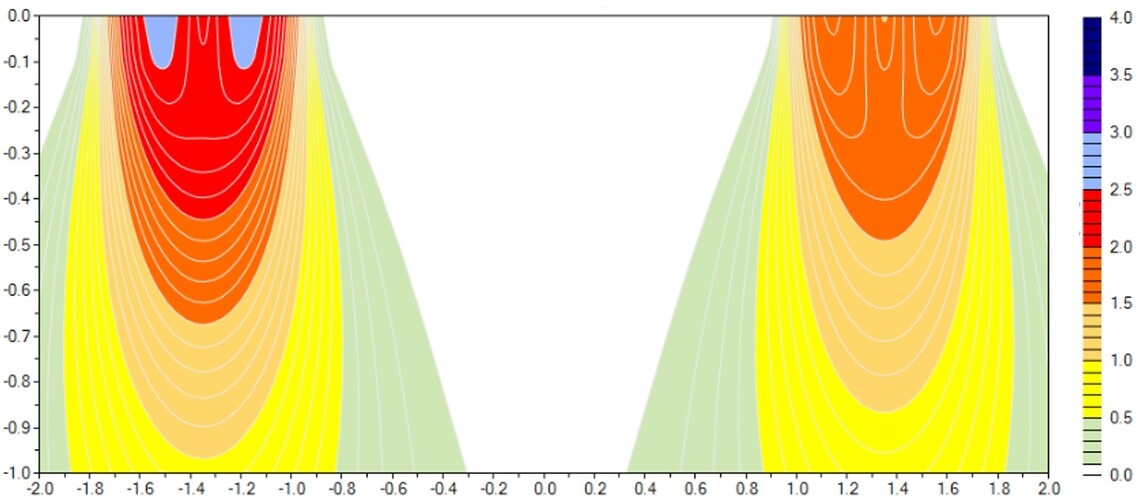
Soil stress map comparison
Accross the track (m)
Stress (bar)
For the width: while wider tires can improve your productivity in the field, they also increase the risk of exceeding the machine's width limits on the road. This trade off needs to be considered when choosing the tire width.
2. Good traction
Since you can't wait for good weather to harvest, you need to be able to work efficiently in all types of weather, including wet and muddy conditions. Good tire traction is therefore an essential criterion if your ag tires are going to meet your yield objectives even in difficult conditions.
Your tires must maintain good mobility in the field and provide good stability for the combine harvester, without causing damage to the soil.
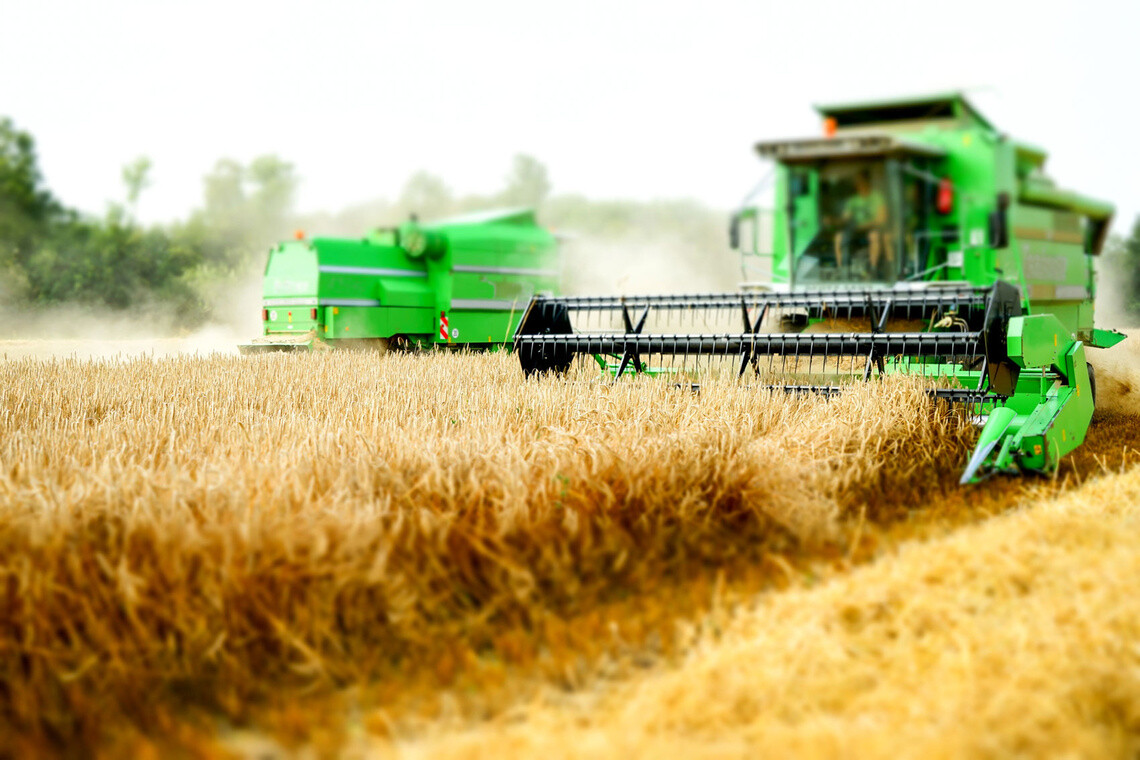
good traction is an essential criterion when choosing combine harvester tyres
3. Low tire pressure
Soil compaction can become a problem when using heavy machinery, such as combine harvesters. To limit compaction, your machine needs to be able to run at low tire pressure – in the front...
And in the rear too
On a combine harvester, the front and rear tires are different. Because the front axle is the driving axle, you may be tempted to fit the widest possible ag tires on it in order to lower the pressure and protect your soil.
However, the rear axle is just as important: its role is not only to rotate the combine harvester but also to carry the load. Choosing the cheapest farm tires for the rear would certainly reduce the cost, but they might need a higher pressure. This will generate soil compaction and could cancel out the soil-preserving benefits of front-mounted tires.

technical services for agriculture
Young farmers in soybean fields before harvest
This cost-cutting choice could have a negative impact on your crop yield in the long term. High-quality ag tires at both front and rear of your combine harvester are a recommended investment for greater productivity.
4. Good load capacity
Like all farmers, you're probably looking to maximize productivity. And the bigger your tank, the less time you spend stopping to empty your crop at the edge of the field. But a bigger tank also means a heavier load, which is carried by your tires. Their ability to carry a heavy load at the lowest possible air pressure is therefore an essential element for choosing the right farm tires and maximizing your yield.
5. Durability
Resistance is essential when you drive in places where your tires can be damaged by stubble, metal parts or other elements. Furthermore, as combine harvesters are only used for harvesting, the tires remain on the machine for a very long time, so this resistance must last over time. That's why we recommend choosing durable agricultural tires that can withstand damage throughout their lifetime rather than blocking your harvesting process.
The best Michelin ag tires for your combine harvester
Michelin has taken all the above points into account as we worked to develop efficient tires that are adapted to your specific harvesting needs. And to meet all the harvesting needs, we have designed two ranges of tires: Michelin MEGAXBIB tire and Michelin CEREXBIB tire. Keep reading to learn the differences between these two tire ranges.
Michelin MEGAXBIB & Michelin MEGAXBIB2 tires

michelin megaxbib2 entry level range for harvester
This is Michelin's entry-level range, designed to meet basic harvesting needs. The main advantages of this range include:
- durability
- load-carrying capacity
- good stability
- good traction
While the Michelin MEGAXBIB tire is resistant, the Michelin MEGAXBIB 2 tire is designed to be more durable and has efficient road handling. While slightly different, both tires are excellent options for an entry-level model. The Michelin MEGAXBIB tire version will depend on the tire sizes you need.
Michelin CEREXBIB 2 tire
For enhanced benefits compared to the Michelin MEGAXBIB tire, we recommend you consider our premium offer: Michelin CEREXBIB 2 tire. Here's why:
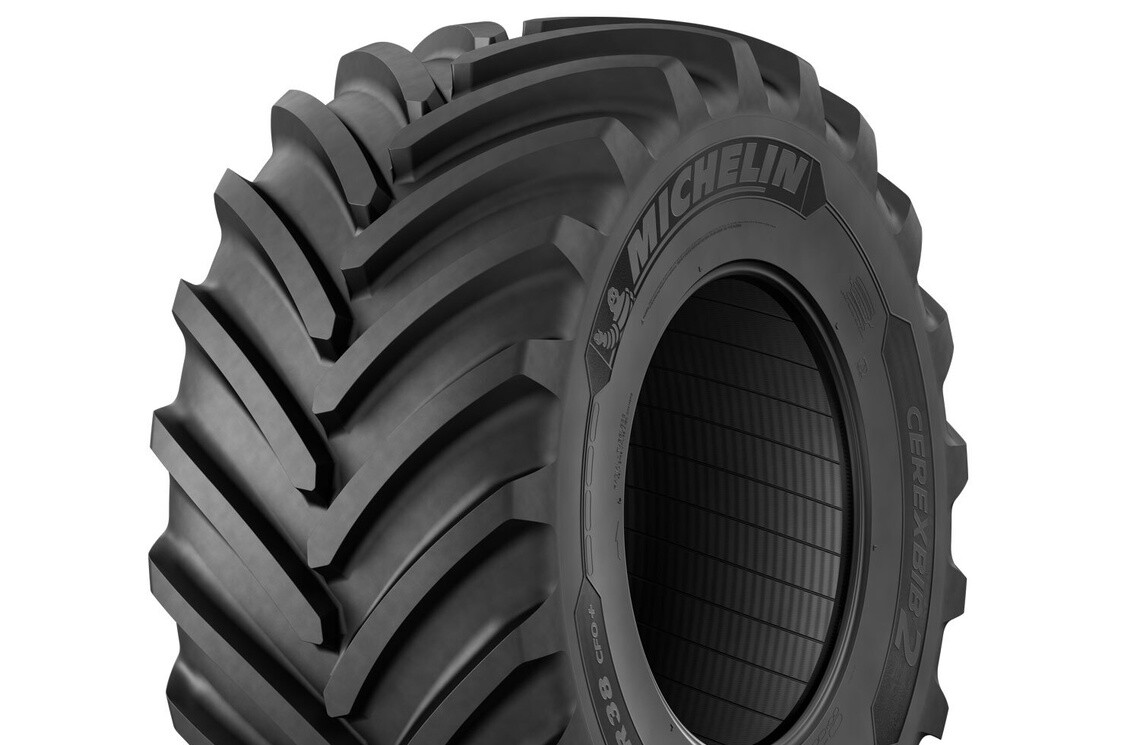
michelin cerexbib 2 premium offer for harvester
It protects your soil better
This tire is the ideal candidate for soil protection with Michelin's UltraFlex technology, which meets the VF (Very High Flexion) standard. CEREXBIB 2’s reinforced sidewalls allow greater flexion, enabling it to carry 40% more load or reduce pressure by 40% for the same load.(2)
Several studies have established that the use of Michelin UltraFlex technology tires improves agricultural yield from 2 to 6% per year.(3)
With reduced tire pressure, the tire's footprint is longer, which helps optimize traction and provides better protection to your soil. This type of tire is ideal for working in conditions that are less than ideal – even wet ground, without impacting your yield.
It provides a load bonus
Michelin CEREXBIB 2 tire is also compatible with the CFO (Cyclic Field Operation) standard, which allows you to have load bonuses on machines, such as combine harvesters, that work with cyclical loads in the fields. For example, at a pressure of 2.8 bar and a cyclic speed of 6 mph (10 km/h), Michelin CEREXBIB 2 (VF 710/70 R42) can carry over 4 tons more than at 25 mph (40 km/h).
With Michelin CEREXBIB 2 tire certified CFO+, Michelin is able to offer an additional load bonus for a field speed of 6 mph (10 km/h) (the average working speed of a combine harvester).(4)
It is CTIS compatible*
Michelin CEREXBIB 2 is compatible with CTIS (Central Tire Inflation System), so you can easily adjust the tires' pressure to suit your use (field / road). And if you're in any doubt about the right pressure, you can use our Michelin Agropressure tool, which will tell you in just a few clicks which pressure to use for your machine.
Click to find out more about our ag tires for combine harvesters:
Need more advice? Discover our tire buying guide.
(1) Maximum authorized width may vary from country to country.
(2) Normative gap between standard tire vs VF (Very high Flexion) tire.
(3) A study carried out by Harper Adams University in the UK from 2013 to 2017, demonstrates that Michelin UltraFlex technology increases agronomic yields from 2 to 6%. These results are confirmed by similar studies carried out in the United States (Illinois) in 2015 and Brazil (Mato Grosso) from 2018 to 2021.
(4) Michelin CEREXBIB 2 is certified CFO+ by ETRTO (European Tire and Rim Technical Organization), standard market norm.
* CTIS is only available in certain countries. Ask your dealer for further information.
